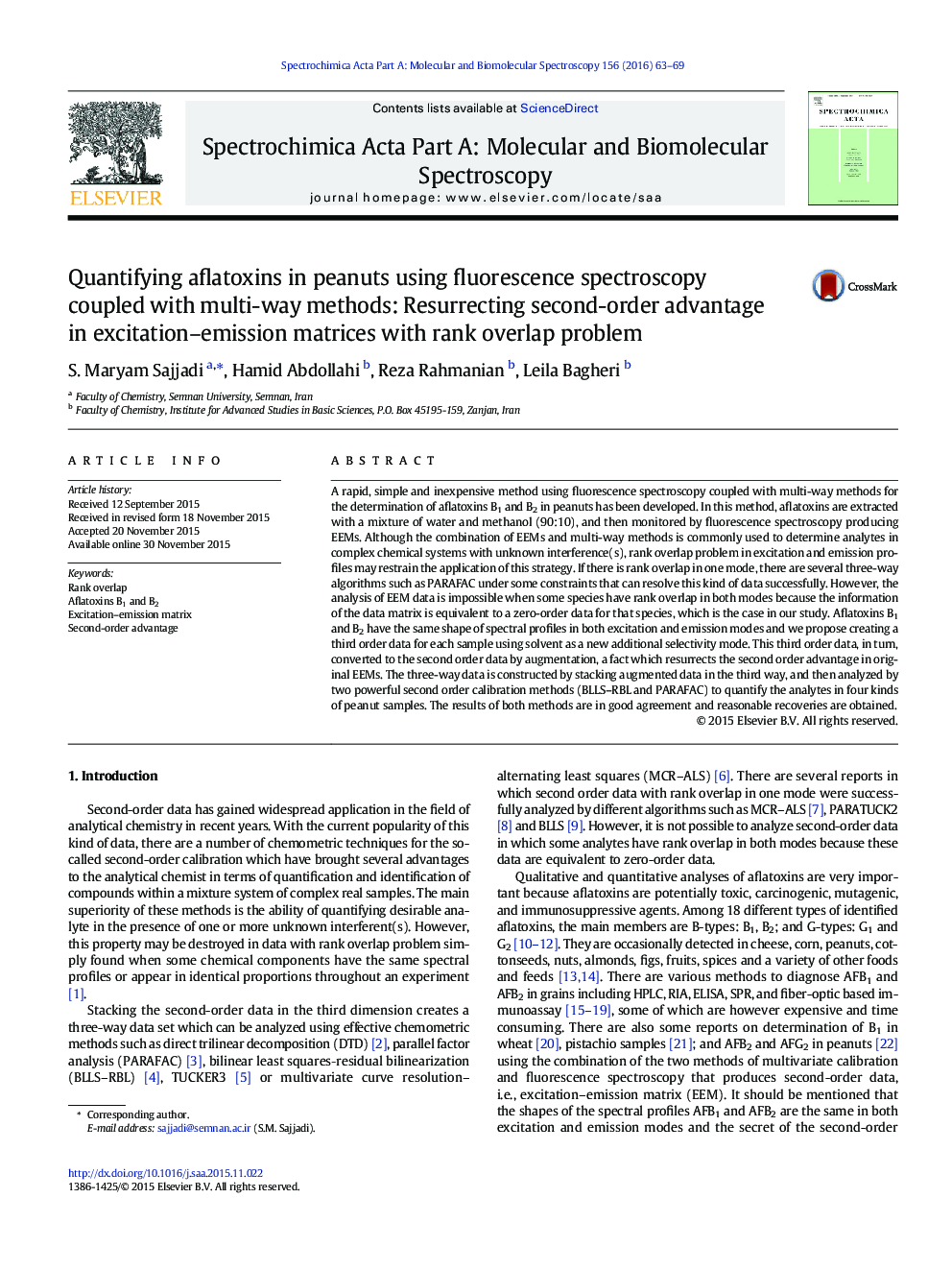| Article ID | Journal | Published Year | Pages | File Type |
|---|---|---|---|---|
| 1229531 | Spectrochimica Acta Part A: Molecular and Biomolecular Spectroscopy | 2016 | 7 Pages |
•Quantifying aflatoxins B1 and B2 in peanuts with no suitable extraction solvent•Resurrecting second-order advantage in EEMs with rank overlap problem in two modes•Applying “BLLS-RBL” to quantify aflatocxins B1 and B2 in real samples
A rapid, simple and inexpensive method using fluorescence spectroscopy coupled with multi-way methods for the determination of aflatoxins B1 and B2 in peanuts has been developed. In this method, aflatoxins are extracted with a mixture of water and methanol (90:10), and then monitored by fluorescence spectroscopy producing EEMs. Although the combination of EEMs and multi-way methods is commonly used to determine analytes in complex chemical systems with unknown interference(s), rank overlap problem in excitation and emission profiles may restrain the application of this strategy. If there is rank overlap in one mode, there are several three-way algorithms such as PARAFAC under some constraints that can resolve this kind of data successfully. However, the analysis of EEM data is impossible when some species have rank overlap in both modes because the information of the data matrix is equivalent to a zero-order data for that species, which is the case in our study. Aflatoxins B1 and B2 have the same shape of spectral profiles in both excitation and emission modes and we propose creating a third order data for each sample using solvent as a new additional selectivity mode. This third order data, in turn, converted to the second order data by augmentation, a fact which resurrects the second order advantage in original EEMs. The three-way data is constructed by stacking augmented data in the third way, and then analyzed by two powerful second order calibration methods (BLLS–RBL and PARAFAC) to quantify the analytes in four kinds of peanut samples. The results of both methods are in good agreement and reasonable recoveries are obtained.
Graphical abstractFigure optionsDownload full-size imageDownload as PowerPoint slide
